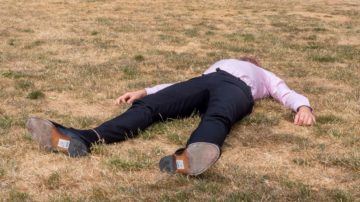Tom Banham in 1843 Magazine:
 The lawns at Tusmore House, a neo-Palladian mansion 15 miles north of Oxford, are so perfectly flat and exactingly shorn that they induce a kind of vertigo. Unlike familiar grass, with its divots and erupting daisies, the grass here feels as though it might evaporate underfoot in a cloud of pixels. On a sticky afternoon last summer, David Hedges-Gower, a four-decade veteran of the turf industry and grass whisperer to the wealthy, inspected what looked to the layman like flawless green carpet and found it wanting.
The lawns at Tusmore House, a neo-Palladian mansion 15 miles north of Oxford, are so perfectly flat and exactingly shorn that they induce a kind of vertigo. Unlike familiar grass, with its divots and erupting daisies, the grass here feels as though it might evaporate underfoot in a cloud of pixels. On a sticky afternoon last summer, David Hedges-Gower, a four-decade veteran of the turf industry and grass whisperer to the wealthy, inspected what looked to the layman like flawless green carpet and found it wanting.
Paul Gough, Tusmore’s head gardener and the man responsible for the lawns’ day-to-day upkeep, agreed. Ordinarily, he’d mow the grass down to 12mm, just long enough to withstand seasonal variations in temperature and rainfall. But Tusmore’s owner, Wafic Saïd, a Syrian businessman and philanthropist who once helped arrange a $50bn-and-counting arms deal between Britain and Saudi Arabia, had been in residence, so they’d mown golf-green short. Weeks of scorching heat and relentless rain had bruised the turf. There were spots of fungus and clover, as well as encroaching annual meadow-grass, which is subtly different to the bentgrass and fescue that were sown here at great expense. (The difference is too subtle for herbicides – patches of meadow-grass have to be cut out with a pocket knife.)
More here.
